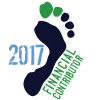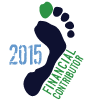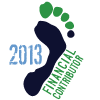I am a new member. I'm 44 and have been running in "normal" shoes since I was 14. When I turned 30, I transitioned from 5K - 15K distance into 25K - marathon distance. I've done 12 marathons (3:30 - 4:00 times), and also a few half ironmans. This past summer, I started reading about barefoot running, and became interested because my marathon training often led to IT-band problems. I started going barefoot as much as possible this past summer, except in running. Then after my last marathon (end of Aug), I started my transition to minimalist shoes (Merrill Trail Glove). I started super slow (no more than a mile on a given day), and slowly worked my way up to 8 miles in these shoes.
Are there any members out there with a similar background? While my transition has gone pretty well overall, I wonder how things will go as the mileage increases. My feet do feel sore after the longer runs, especially in the forefoot. Is this normal? And while I use the roller on my calves before each run, my calves feel pretty tired by the end of a 6-8 mile run. Will I have cramping problems when I get to the marathon? And how does barefoot running impact the speed of my marathons? I'm hoping to do a 25K in my minimalist shoes in May, and 1 or 2 marathons this fall.
Being from Michigan (Grand Rapids), I haven't done much running completely barefoot yet. But hoping to give this a try this summer too. We have some good trails in the woods by our house.
Any advice is appreciated. Thanks!
Dave
Are there any members out there with a similar background? While my transition has gone pretty well overall, I wonder how things will go as the mileage increases. My feet do feel sore after the longer runs, especially in the forefoot. Is this normal? And while I use the roller on my calves before each run, my calves feel pretty tired by the end of a 6-8 mile run. Will I have cramping problems when I get to the marathon? And how does barefoot running impact the speed of my marathons? I'm hoping to do a 25K in my minimalist shoes in May, and 1 or 2 marathons this fall.
Being from Michigan (Grand Rapids), I haven't done much running completely barefoot yet. But hoping to give this a try this summer too. We have some good trails in the woods by our house.
Any advice is appreciated. Thanks!
Dave
































